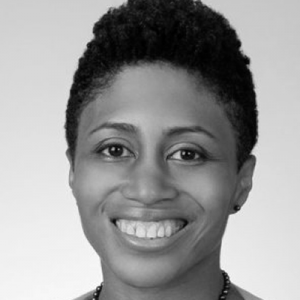Conversation with the NESTcc Governing Committee Interim Chair: Michelle McMurry-Heath, MD PHD
 “I love the challenge of making scientific arguments around technology and the positive impact of getting that challenge right. Learning something new each day, working with bright and engaged people, and positively impacting patients is what gets me up every morning.”
“I love the challenge of making scientific arguments around technology and the positive impact of getting that challenge right. Learning something new each day, working with bright and engaged people, and positively impacting patients is what gets me up every morning.”
Michelle McMurry-Heath, MD PhD
Worldwide Vice President of Regulatory and Clinical Affairs and Global Head of Evidence Generation, The Medical Devices Companies, Johnson & Johnson
Interim Chair of the NESTcc Governing Committee and AdvaMed Industry Representative
Positively impacting patients is what drives Dr. Michelle McMurry-Heath’s passion to advance regulatory science.
That passion has guided her professional path as a former regulator at FDA and now in her current position where she oversees a broad range of medical device technologies in 140 global markets. Even though her roles have changed throughout her career, Michelle continues to confront the global challenge of bringing safe and effective products to the patients that need them. Fundamental to this challenge is the need to obtain quality data to generate robust information about patient experiences with medical products and their clinical outcomes.
Michelle sees the emerging availability of real-world evidence (RWE) as a tool for both regulators and innovators. RWE offers the possibility to improve the quality and depth of insights about device performance. However, a catalyst is needed to create the infrastructure and tools to facilitate access to this real-world data to generate reliable and meaningful evidence about patient outcomes. She believes the National Evaluation System for health Technology Coordinating Center (NESTcc) can be that catalyst.
As a gateway to real-world data sources, NESTcc can bring stakeholders together to responsibly facilitate studies that meet the needs of the medical device ecosystem. For industry innovators, engaging with NESTcc could enable new cost-effective approaches to pragmatically generate safety and effectiveness evidence, and accelerate the development of innovative products to meet patient needs.
“NEST is the first example of a well-funded, well-coordinated, broadly supported effort to open up this novel data and evidence source to the device ecosystem. Building it in a way that facilitates innovation, protects patients, and reassures health authorities is essential. Having innovators at the table is critically important. We have the potential to build something groundbreaking. That’s why I wanted to serve on the Governing Committee of the NEST Coordinating Center,” Dr. McMurry-Heath said.
The 15-member inaugural Governing Committee is a microcosm of the healthcare ecosystem given the task of advancing RWE to improve patient outcomes. Because of its diverse composition, the Governing Committee can serve as a conduit to align NEST stakeholders to support a learning health care system, ensure patient safety, and support improvements in clinical care. Michelle noted that she was honored to serve as the interim chair of the Governing Committee and work with the staff and members to support the development of this new organization.
How the Medical Device Industry Can Help Support Efforts of NESTcc
Michelle has held many roles in the health ecosystem. As the AdvaMed trade representative, Michelle considers herself accountable to the broader AdvaMed membership. But, she also considers it her job to encourage industry involvement by communicating the progress and potential of NESTcc to member companies. As a physician, she views her NEST advocacy through a public health lens where she is focused on meeting the needs of individual patients while also addressing larger population health needs.
How does she make the case for NEST?
She paints a picture of the pressures the device industry is under today:
“The regulatory requirements around the world are evolving and there is a greater demand by regulators and affiliated payers for data on how devices perform before and after they enter the marketplace. At the same time, the device industry has experienced a seventy-five percent drop in investor capital in recent years. Many of the investors that remain demand rapid and/or predictable returns. Because we do not see the federal investment in early-stage research that you see in pharmaceutical products, these early investors typically fund the breakthrough device innovations that transform patient care. We must find a more efficient, effective, and reliable way to generate evidence to ensure that we meet the needs of the market and our patients,” she said.
Investors and device entrepreneurs are brave, creative, and visionary healthcare leaders who are striving to create the future. It is a shared interest for both groups to support the best minds to advance mechanisms that create more predictability, Michelle noted. Industry has agreed to support NESTcc through User Fee Agreements. NESTcc is using this investment to create the foundational infrastructure to facilitate faster and more efficient development of safety and performance evidence for devices. Industry partners can further contribute now by taking part in NESTcc’s opportunities for engagement and in the future by leveraging NEST throughout the total product life cycle (TPLC).
“We hope that NEST will be built for understanding how new device innovation works, but it will only be functional if device companies are willing to test their innovations within the network. Companies must step forward and use these data sources in a way that gets regulatory approval, coverage determinations, and market uptake and acceptance,” she said.
Related Links
This blog was written by Marina Damiano, Ph.D., as a contributing member of the NESTcc communications team.
